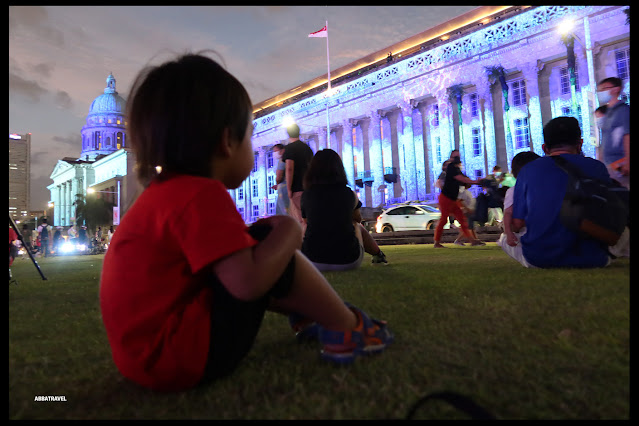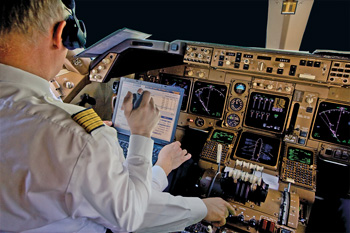Definition: Multitasking
is the simultaneous execution of two or more tasks. A hallmark of the
proficient pilot is the ability to multitask. In aviation,
multitasking involves two different abilities: attention switching and
simultaneous performance and its important to develop both of these abilities.
Stanford
University professor of sociology Clifford Nass, along with associates Eyal Ophir
and Anthony Wagner, decided to investigate what it was that gave
multitaskers the ability to do what they do.
The researchers assembled
two groups of people. One group included those who regularly did lots of
multitasking, while the other group did very little multitasking. The
first experiment tested the subjects’ ability to ignore extraneous
information and focus only on what was important. The research team was
surprised to discover that while those who did not multitask had no
problem successfully completing the exercise, the mulitaskers were very
distracted by extraneous information.
Next
the researchers decided to test whether multitaskers were better at
storing and organizing information. Once again the multitaskers failed
miserably, while the control group did fine.They figured maybe they were better at switching between tasks
faster than others. Again the control group unaccustomed to
multitasking outperformed the subjects with lots of multitasking
experience.
Basically,
the researchers found that when presented with many sources of
information, the multitaskers found it difficult to filter out
irrelevant information, focus in on certain information or keep things
separate in their minds. This is in line with other research showing
that multitasking results in a strong negative impact on performing even
simple tasks, and that it slows people down and results in more
mistakes. This is more than a little scary when you consider what it
takes to fly an airplane. The “simple” task of manually controlling the
airplane involves taking in multiple streams of information through our
eyes, ears and other senses, and then sending out the proper signals to
our hands and feet so they all work together to make the airplane do
what we want.
Now
up the ante to instrument flying. The pilot has to switch rapidly
between different sources of information to construct a mental picture
of what the airplane is doing and how to get it to go where he wants it
to go. And that is still just for manually flying the airplane. Next we
need to add in air traffic control instructions, often delivered at
machine-gun speed. Then there is the requirement to interpret the
instructions from ATC through the use of paper or electronic charts and
to fly, or program the autopilot to fly, the desired route. At the same
time the pilot has to keep track of the weather at his current location,
along his route and at his destination. Finally, add in questions from
nervous passengers and personal needs like eating, drinking and bladder
pressure relief. As one pilot responded when queried by ATC about his
varying altitude, “It’s OK, I’m done now.”
In high-traffic areas and/or bad weather, the
multitasking can become intense. In high-performance airplanes, the
pilot typically can use an autopilot to take over some of the basic
flying and navigating, but the autopilot itself adds another layer of
inputs and outputs for the pilot to manage. Likewise, in a crew
situation the pilots can split the load, but once again the task of
coordinating between the two pilots adds complexity to the equation.
Multi-tasking
Attention Switching and Simultaneous Performance
Attention Switching
*Image Source: https://www.upsidelearning.com/blog/2010/04/22/multitasking-or-attention-switching/
Continuously
switching attention between two or more tasks is
attention switching. For example, when using a checklist to
perform a preflight inspection, one must continuously switch attention between the checklist and the equipment which is inspected, then retrieve the next step in the procedure and
perform the step.
For many kinds of
tasks, attention switching is the only way to accomplish multitasking.
For example, it is generally impossible to look at two different things
at the same time. The area of focused vision (called the fovea) is only a
few degrees in span and can only be directed to one location at a time.
Similarly, people cannot listen to two conversations at the same time.
While both conversations fall upon the ears at once, people must devote
their attention to the comprehension of one, to the exclusion of the
other.
Psychologists
sometimes refer to these limiting features of human
information-processing capabilities as bottlenecks. For example, people
have bottlenecks within the individual perceptual channels of hearing
and seeing. Another important bottleneck becomes apparent when people
attempt to process the information perceived or retrieved from memories.
Simultaneous Performance
Performing
several tasks at once, or simultaneous performance, is the second type
of multitasking. This type of multitasking becomes
possible when no bottlenecks are present and when one or more of the
tasks being performed are skills developed to the point of being
automatic. For example, the experienced instrument pilot is able to
perform basic attitude instrument flying while communicating with ATC.
For these pilots, scanning instruments and responding to minor attitude
deviations with small control inputs has become automatic. The
attentional resources of the pilot are free to devote to thinking and
talking about other topics.
It
is important to note that the ability to simultaneously perform tasks
is a fragile phenomenon. For example, suppose Pilot is performing the
basic attitude control task and communicating with ATC when suddenly
encounters turbulence. The attitude control task quickly increases in
difficulty and begins to require more and more deliberate attention. The pilot's ability to perform both tasks simultaneously quickly degrades.
Since
doing several things at once is a natural part of aviation,
attention switching and simultaneous performance need to be developed. One should have devoted enough time to study and practice such that the
individual tasks can be performed reasonably well in isolation.
-------------------------------------------------------------------
Factors which hinder multitasking
Distractions and Interruptions
*Image Source https://www.goalcast.com/2017/10/11/7-simple-ways-reduce-distractions-get-done-less-time/
A
distraction is an unexpected event that causes one's attention
to be momentarily diverted. One must learn to decide whether or not
a distraction warrants further attention or action on their part. An
interruption is an unexpected event for which the individual voluntarily
suspends performance of one task in order to complete a different one.
Interruptions are a significant source of errors and one must be
made aware of the potential for errors caused by interruptions and
develop procedures for dealing with them. A classic example is an
interruption that occurs when running a checklist, stops the checklist when dealing with an interruption but
erroneously picks up at a later point in the procedure, omitting one or
more steps.
Fixation and Inattention
Since human attention
is limited in focus and highly prone to distraction, people are
vulnerable to two other types of problems: fixation and inattention.

Image Source: https://twitter.com/backtosnow/status/1111595117901762561
*In December of 1972, Eastern Airlines Flight 401, ferociously collided
with the Florida Everglades. The plane was an L-1011-1 Tristar jumbo
jet, which marked the first crash of a widebody aircraft. Reports
claimed that the entire crew was busy attending to a faulty light bulb,
and they were completely oblivious to the fact they were rapidly falling
in altitude. The crash sadly killed 101 people, but 75 miraculously
survived to reveal exactly what occurred.*
Fixation
occurs when one is absorbed in performing one task to the
exclusion of other tasks. Fixation on a task is
often a sign that the task has not received enough practice in
isolation. That is, the individual has not yet mastered the task well
enough to perform it in addition to other tasks. Fixation can happen
even when individual skills have been reasonably mastered, when individuals
have not yet learned the importance of managing their own limited
attentional resources.
Inattention
occurs when an individual fails to pay attention to a task that is
important. Inattention is sometimes a natural by-product of fixation. Individuals fixate on one task and become too busy to attend to other
tasks. Inattention also happens when students are not busy: attention
may drift when they become bored or think that a task does not deserve
their attention. In some cases, this type of monitoring rapidly deteriorates when humans
are asked to passively monitor gauges or the progress of an automated
system such as a GPS navigation computer or autopilot. Furthermore, it
seems that the more reliable the system becomes, the poorer the human
performance becomes at the monitoring task. The first line of defense
against this type of inattention is to alert the individual to the problem,
and to help students develop habits that keep their attention focused.
Mitigation strategies
So
what’s a poor overwhelmed pilot to do? The first step is to avoid the
need to multitask while taxiing or in the air by carefully planning the
flight. Every piece of information accessed ahead of time is one less
task that needs to be performed in flight.
In a critical multitasking
situation, this one piece of information may be the requirement that
overloads the pilot to the point that he loses track of something else
critical to flight safety.
For example, I personally believe that trying
to find the tower frequency at Martha’s Vineyard was likely the final
link in the long accident chain that led John F. Kennedy Jr. to crash
into the ocean in 1999. When he took off that evening, Kennedy was under
considerable personal, physical and business stress. His flying skills
were rusty, and he had little experience on his own in the sophisticated
airplane he was flying. Although legally VFR, he was essentially flying
on instruments that evening when he disconnected the autopilot for the
descent into Martha’s Vineyard. At that point something as simple as
looking for the tower frequency on the sectional chart could have been
enough of a distraction to cause a momentary loss of control from which
he was unable to recover.
Another
step that can reduce multitasking is to try to accomplish as much as
possible during times when there are fewer things going on. This means
getting everything set up and checked before starting to taxi, and then
focusing on controlling the airplane, watching for traffic and following
the taxi clearance while in motion. The same goes for the
before-takeoff checks.
The first few minutes after takeoff can be one of
the busiest times of the flight, so it is important to take the time to
get everything possible set up before lining up on the runway. In a
number of accidents, a pilot who didn’t do this and was trying to take
care of multiple items immediately after takeoff lost control of the
airplane and crashed.
Cruise
flight provides a time to relax; however, some pilots become too
relaxed and fail to take advantage of this down time to check the
weather and get ready for the approach at the destination. I recently
wrote about the crash of American Airlines Flight 965 on approach to
Cali, Colombia, in December 1995. Even though it was a three-hour
flight, the crew got so involved in a conversation about crew duty time
rules that they failed to prepare for what is one of the more difficult
approaches in the world. On top of that, it was the first time the
copilot, who was flying, had ever landed there. The final straw came
when the crew, which was already lagging far behind the airplane,
accepted a straight-in approach when they were much too close to the
airport to accomplish that approach even if they had been prepared for
it. At that point the crew became overloaded to the point of total
confusion, and following a navigation error, lost all situational
awareness of their position relative to the airport and the surrounding
mountains. Just 15 minutes spent reviewing the approach and the
surrounding area, and accomplishing the descent and approach checklists,
would likely have been enough to establish sufficient situational
awareness to avoid the errors they committed and to realize that
switching to the straight-in approach was not advisable at that point.
Multitasking
is one of those nebulous concepts that are hard to pin down as a cause
of an accident or incident. However, because flying involves tracking
many sources of information and managing multiple systems and controls,
it doesn’t take much to be overwhelmed to the point that critical
information is missed or critical actions are neglected or done
incorrectly.
A conscious effort to reduce multitasking to the minimum
necessary by meticulous planning, and by accomplishing everything
possible before taxiing, takeoff or approach, can pay huge dividends in
safety and peace of mind.



















































